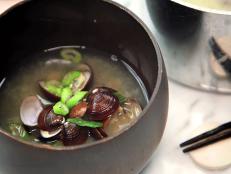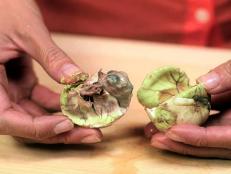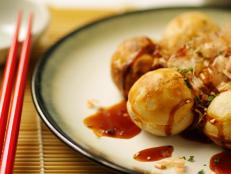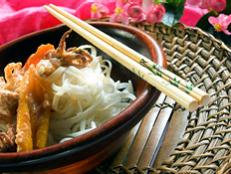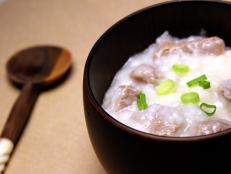Russian Dishes Decoded

iStock
Think Russian food is all bland meat and boiled potatoes? Think again. Luckily, dining in the Motherland is not as grim as you may have been led to believe. Vegetarian options are aplenty. Ethnic restaurants abound. And while the Russian love for mayonnaise and smetana (sort of crème fraîche-meets-sour cream) knows no bounds, one cannot say it isn’t justified. After all, upon your return from Russia you may find yourself instinctively adding a dollop to everything. So ditch your preconceived notions about Russian cuisine and bring your appetite. This is what you’ll be eating in Russian homes and restaurants.
Salat Olivier -- If you’re on a diet in Russia you might think, “I’ll just order a salad -- that’s healthy!” But you’d be wrong. The term “salat” is generally applicable to dishes most Westerners would classify in the picnic potato/macaroni-salad category. A hearty mix of starchy ingredients and, you guessed it, mayonnaise. But don’t let that dissuade you from trying Russians’ ingenious blends! After all, diet starts tomorrow. Salat Olivier is made with potatoes, pickles, boiled eggs, chicken (or ham), onions and carrots. All of which is held together by copious amounts of mayonnaise.
Salat Vinaigrette -- This popular purple salad is made with cooked small diced vegetables like beets, carrots, pickles and potatoes, then mixed with peas and minced onions, and tossed with sunflower oil and vinegar. It’s actually a healthy salad.
Borscht -- A trip to the Motherland is not complete without bowls full of this hearty dish. This classic soup is made with beets, cabbage, potatoes, tomatoes, carrots, onions, garlic and dill, and served with the ever-apparent smetana. There’s also green borscht (zelenyy borshch) that’s made with sorrel, onions, potatoes, herbs and heavy cream, before being topped with boiled eggs.
Kholodets -- While the 1950s were the last time that Americans had a love affair with aspics, in Russia dishes sealed in gobs of gelatin never went out of style. Kholodets is bits of meat, or fish, in cold gelatin. It’s usually served with amazingly potent, bright pink horseradish (khrin). Not for everyone.
Salat Shuba -- The full name of this dish translates to “Herring Under Fur Coat” salad, in that herring fillets are literally cloaked by vegetables. This bright pink, layered salad gets its remarkable color from sliced beets. There are also bands of eggs and potatoes, along with diced carrots and onions. Mayonnaise binds the whole thing and it’s often presented in a glass dish so that all the meticulous layers can be appreciated. A time-consuming dish.
Blini -- Slightly thicker than a crepe, this is a Russian-style pancake. It is served either sweet or savory and filled with a variety of things like mushrooms or salmon in a sour cream sauce, or sweet farmers’ cheese with sour cherries.
Caviar (Ikra) -- Entire books have been written on Russian caviar, and prices range from the doable splurge of Siberian sturgeon, to the prized Osetra caviar whose price is only eclipsed by Beluga. Russian caviar is usually served with blini, or toast points, and traditional condiments like chopped hard-boiled eggs, minced red onions, and sour cream. Caviar, my friends, is all about the show.
Shashlik -- If you’re invited to a shashlik party, by all means go. The Russian answer to the shish-kabob, here skewered meat (usually pork) is grilled over an open pit. Marinade recipes vary but usually involve kefir. There are plenty of Russian restaurants that specialize in the stuff, but the only way to truly experience this meat is out in the woods, with a bunch of Russians, digging a hole, lighting a fire, drinking some beers and grilling out.
Salo -- Salo is raw, unrendered pork fat. Russians often freeze it so they can cut it into thin pieces. Often they eat it on black bread topped with onions, or just straight up raw with cloves of garlic. Salo is practically worshipped as its own food group and is very much a source of national pride. A must-try.
Varenyky -- A handmade Russian-style pierogi. Generally filled with potatoes and served with sour cream. There’s also a dessert version made with black cherries and served with sweetened cream.
Pelmeni -- A Russian dumpling that looks like tortellini, but usually filled with ground meat and spices. They’re either served like soup in a light broth, or pan-fried with onions till crispy and served with ... well, hopefully you can guess that by now.
Condiment Nation
Condiment connoisseurs, rejoice! Russians’ love for all things ketchup and mayonnaise has resulted in condiment aisles that rival that of the American cereal aisle. From ketchup made particularly for shashlik, to infinite mayonnaise choices that proudly boast of their fat content, Russia is a condiment-lover’s paradise. For the rest of us, it’s a little overwhelming … until we slowly get hooked.
Next Up
10 Of The Oddest Things Seen On Google Maps
10 Essential Things You Need to Know for Your First Trip to India
9 Ways to Eat Like a Local in Sydney
Japanese Hangover Cure: Shijimi Miso Soup
Soothe your morning hangover with shijimi miso soup.



